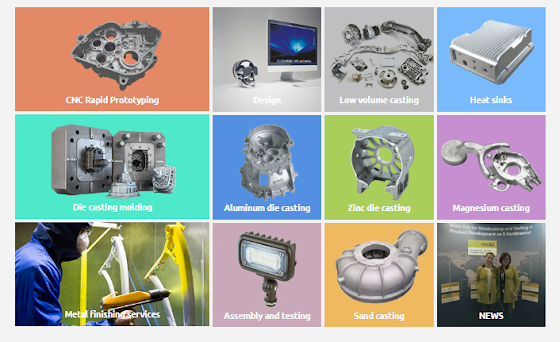CNC Machining vs. Die-Casting: Which is Right for You?
CNC machining parts and die-casting parts are two of the most common
manufacturing processes used to produce metal parts. CNC machining is a
computer-controlled process that uses a variety of cutting tools to remove
material from a work piece. Die-casting is a process that forces molten metal
into a mold to create a desired shape.
Both CNC
machining and die-casting have advantages and disadvantages. CNC machining is
more versatile and can be used to produce a wider range of parts than
die-casting. However, CNC machining can be more expensive than die-casting,
especially for high-volume production. Die-casting is less versatile than CNC
machining, but it is more efficient and can produce parts more quickly.
In general,
CNC machining is a good choice for low- to medium-volume production of complex
parts. Die-casting is a good choice for high-volume production of simple parts.
CNC
machining is a computer-controlled manufacturing process that uses a variety of
cutting tools to remove material from a workpiece. CNC machining can be used to
produce a wide range of parts, including prototypes, small batches, and
high-volume production runs.
CNC
machining is a versatile process that can be used to produce parts from a
variety of materials, including metals, plastics, and wood. CNC machining is
also known for its accuracy and precision.
Advantages
of CNC Machining
- Versatility: CNC machining can be used to produce a wide range of
parts, from prototypes to high-volume production runs.
- Accuracy and precision: CNC machining is known for its accuracy and
precision.
- Repeatability: CNC machining can produce parts with consistent
quality and repeatability.
- Speed: CNC machining can produce parts quickly and efficiently.
Disadvantages
of CNC Machining
·
Cost: CNC machining can be expensive, especially
for high-volume production runs.
·
Setup time: CNC machining can have a long setup
time, especially for complex parts.
Die-Casting
Parts
Die-casting
is a manufacturing process that forces molten metal into a mold to create a
desired shape. Die-casting is a high-pressure process that can produce parts
with very thin walls and complex features.
Die-casting
is commonly used to produce parts from aluminum, zinc, and magnesium.
Die-casting is also known for its speed and efficiency.
Advantages
of Die-Casting
- Speed and efficiency: Die-casting is a very fast and efficient
manufacturing process.
- Accuracy and precision: Die-casting can produce parts with high
accuracy and precision.
- Repeatability: Die-casting can produce parts with consistent
quality and repeatability.
- Cost: Die-casting can be a cost-effective manufacturing process,
especially for high-volume production runs.
·
Disadvantages of Die-Casting
- Versatility: Die-casting is not as versatile as CNC machining and
cannot be used to produce as wide a range of parts.
- Part design: Die-casting parts must be designed specifically for
the die-casting process.
- Mold cost: The cost of a die-casting mold can be high, especially
for complex parts.
Choosing
Between CNC Machining and Die-Casting
When
choosing between CNC machining and die-casting, there are a number of factors
to consider, including:
·
Production volume: CNC machining is a good choice
for low- to medium-volume production runs, while die-casting is a good choice
for high-volume production runs.
·
Part complexity: CNC machining is a good choice for
complex parts, while die-casting is a good choice for simple parts.
·
Part material: CNC machining can be used to produce
parts from a variety of materials, while die-casting is commonly used to
produce parts from aluminum, zinc, and magnesium.
·
Cost: CNC machining can be expensive, especially
for high-volume production runs, while die-casting can be a cost-effective
manufacturing process, especially for high-volume production runs.
Applications
of CNC Machined Parts and Die-Casting Parts
CNC
machined parts and die-casting parts are used in a wide variety of industries,
including:
- Automotive
- Aerospace
- Medical
- Electronics
- Consumer goods
- Industrial machinery
Conclusion
CNC
machining and die-casting are both important manufacturing processes that are
used to produce a wide range of metal parts. CNC machining is a good choice for
low- to medium-volume production of complex parts, while die-casting is a good
choice for high-volume production of simple parts.
When choosing between CNC machining and die-casting, there are a number of factors to consider, including production volume, part complexity, part material, and cost.

Comments
Post a Comment